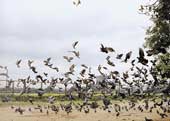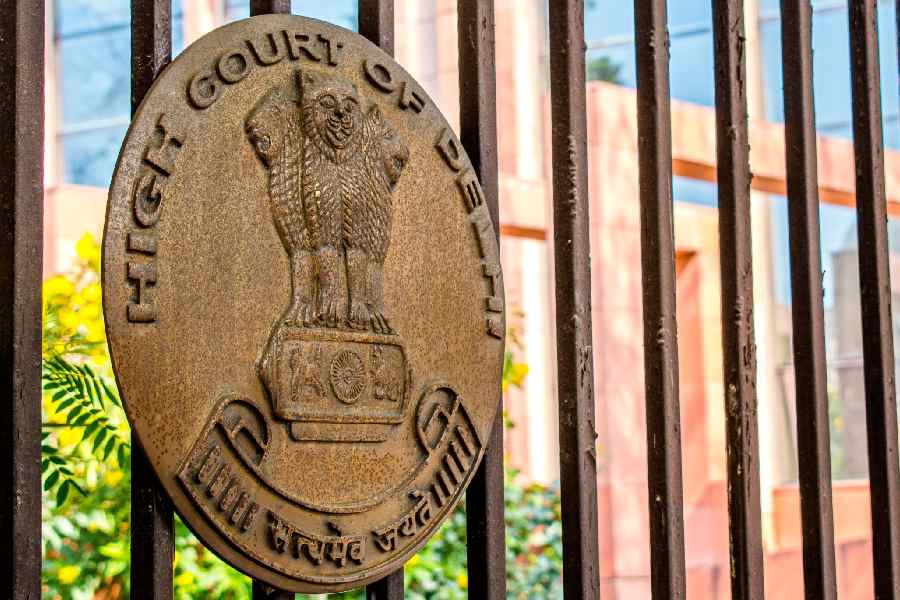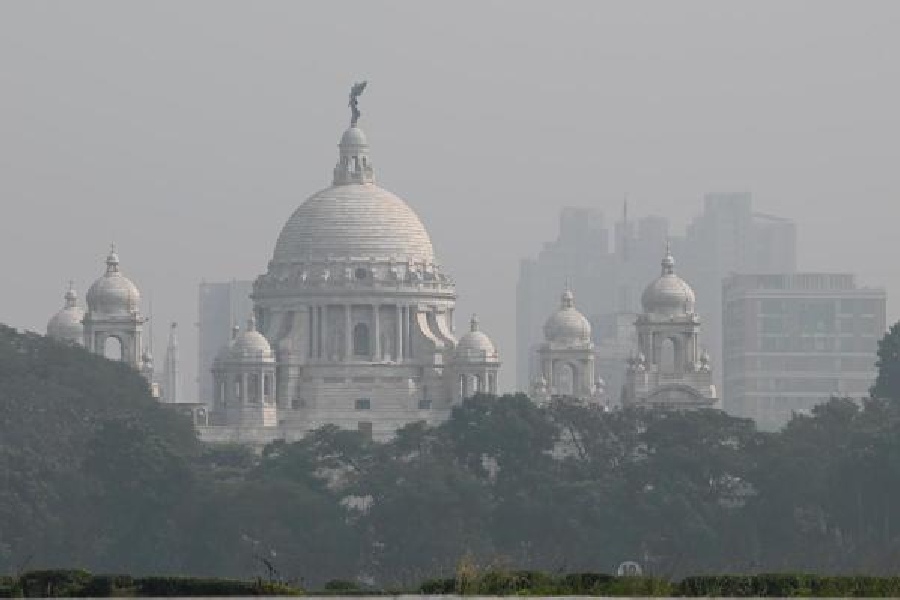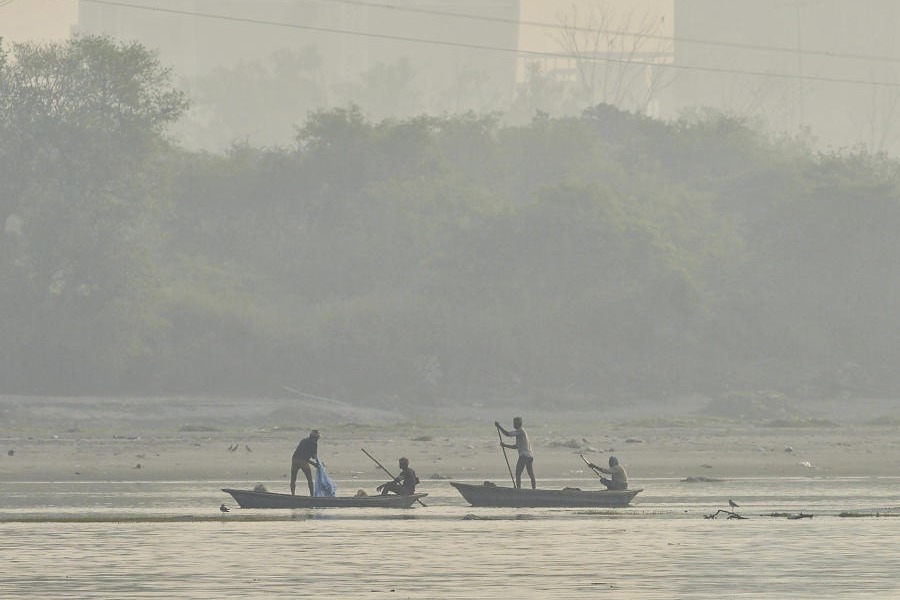 |
Now that the sparrow has been placed in the Red List (of endangered species), it is time to speak out for them and others of their ilk.
Ajoy Home, the Bengali ornithologist, watched and wrote about birds with love and understanding. His books, Birds of Bengal and Known and Unknown Birds, are classics of ornithological literature and exciting documents of bird-watching in the suburbs of Calcutta. His repeated warnings about the loss of bio-diversity around Calcutta due to the development projects undertaken after Independence seem prophetic today.
When the Dusky Seaside Sparrow became extinct in 1988, nobody thought that the common Passer domesticus would begin its flight towards extinction in just 15 years. The sparrow is the most vulnerable of birds because it is totally dependant on man; changes like the increasing use of tin-roofing, instead of the old straw thatch, has deprived them of their favourite nesting sites. Also, there is little hope for a bird that is allergic to mobile phones.
The sparrow can still be spotted in Calcutta, but in fewer numbers. Many kinds of birds have disappeared from the city and can only be seen in suburbs where open space and trees remain. A few years ago I saw a Brahminy kite flying over the Keshtopur canal; it was a beautiful sight and I was reminded of Home’s thrilling accounts of birding in this area. That was the last time I saw this bird here.
Till the early-80s, there were several places in the city where a variety of birds could be found. The Maidan, Alipore, the Lakes, the parks south of Park Street, Tollygunge... But both variety and numbers have shrunk over the years.
When Salt Lake was not as crowded as it is today, it was an ideal place for cycling around with binoculars. In the vacant plots overgrown with bush and scrub, many kinds of birds could be seen. It was in Salt Lake’s Central Park that I saw one of the most enchanting sights while bird-watching: the flight of a Roller! It was sitting on a high wire and every time it flew down to catch an insect from the ground its blue and turquoise colours flashed in the sunlight. Because of the parks, trees and the wetlands, one can see many kinds of birds in Salt Lake, but I doubt if the Rollers still come to Cental Park.
In the part of Dum Dum where I live, I can see a variety of birds. In the midst of the concrete jungle there are nooks and corners where gardens, open land and trees provide shelter and nesting sites. Because most of them need water in the dry months, I have a bird-bath in the garden. It is a round, shallow, clay pot, the kind used for growing seedlings. Since I keep the water clean, and the place is secluded, it has become popular with the birds here.
Among the regular visitors are bulbuls, magpie-robins, tree-pies, drongos, koels, white-breasted water hens, tailorbirds, crows, mynahs and spotted doves.
Though most of them come for a drink, quite a few are regular bathers, plunging into the water and splashing around, or sitting on the rim of the bowl and spraying water on their bodies with their beaks. Their whistles and screams, gurgles of delight and cries of warning enliven many dreary mornings.
 |
At times it is a cacophonous symphony with three or four kinds of birds making their distinctive sounds as arguments go on about who will get to bathe and drink first. The tree-pie is the loudest of the lot, and a bully. Most of the smaller birds are scared of it because it steals chicks from nests and indulges in other criminal activities. It has a harsh, metallic scream which can be irritatingly loud, but it also sings at times, producing a melodious whistle. It really loves water: first drinking its fill, then plunging into the bowl and straggling out with its big body all wet, then flying upto a branch and carefully preening itself dry.
The red-vented bulbuls and magpie-robins are resident birds. They are intelligent, have learnt to live close to human habitation and are welcome in all gardens because of their singing. Both love water and in the hot months, they bathe regularly.
At times, red-vented bulbuls come in groups for a bath. Sitting on the rim of the bowl, one by one they plunge into the water, splash around and pop out again, all the while carrying on a low chatter, interspersed with satisfied whistles. The red-whiskered bulbul is a more refined bird and stays aloof from its gregarious cousin. They also like a drink and a bath, but their habits are more genteel.
The magpie-robin is one of the neatest bathers, first wetting its breast and wings, then stepping into the bowl and dipping its body in the water and finally coming out with wings fluttering. Unlike the bulbul, the magpie-robin is a solitary bird. A couple occupies a patch of territory and intruders face violent resistance.
The breeding season has begun and the bulbul is busy collecting twigs to make a nest. A couple can be seen sitting close together, discussing nest building, delivery dates and food sources! The male magpie robin is showing more interest in its mate. In a few weeks there will be young birds nestling together on low branches, making their first shaky attempts to fly.
Jungle babblers also love bathing on a hot day. They are the avian equivalent of local ruffians. Their raucous screams and aggressive behaviour drive away other birds when they take over the bath. Then they sit in a close circle on the rim and splash in one by one, pushing and shoving and continuously quarrelling over order of precedence.
Jungle mynahs and common mynahs also drink and bathe regularly. When other sources of water dry up, a flock of pied mynahs also comes for a drink.
A surprise visitor is the white-breasted waterhen. Its usual haunt is a weed covered pond in a compound nearby. It has to take a lot of trouble to bathe in the bowl: fold its legs and stoop to dip its body in the water. In the monsoon, the whole family comes down — father, mother and two chicks: little balls of gray furry feathers on long legs. It’s a delightful sight with mother and father teaching the chicks the art of bathing in a bathtub.
The most endearingly cheeky bird in the garden is the tailorbird. It is not afraid of bird or man; when I water the garden they come close and bathe under the spray of water. They also love moving through wet foliage.
The sparrows are afraid of the bowl, it is too big for them. So I have kept a smaller bowl from which they can drink comfortably. Watching them closely nowadays, I feel they behave like birds who know the end is near. They have become quieter; one can hardly hear the familiar chirping anymore.
A recent study in the Sunderbans revealed that birds have declined by 50 per cent. Of course, our forests and sanctuaries must be better maintained. But an equally valuable asset will be lost if we lose the birds in our own backyard.










